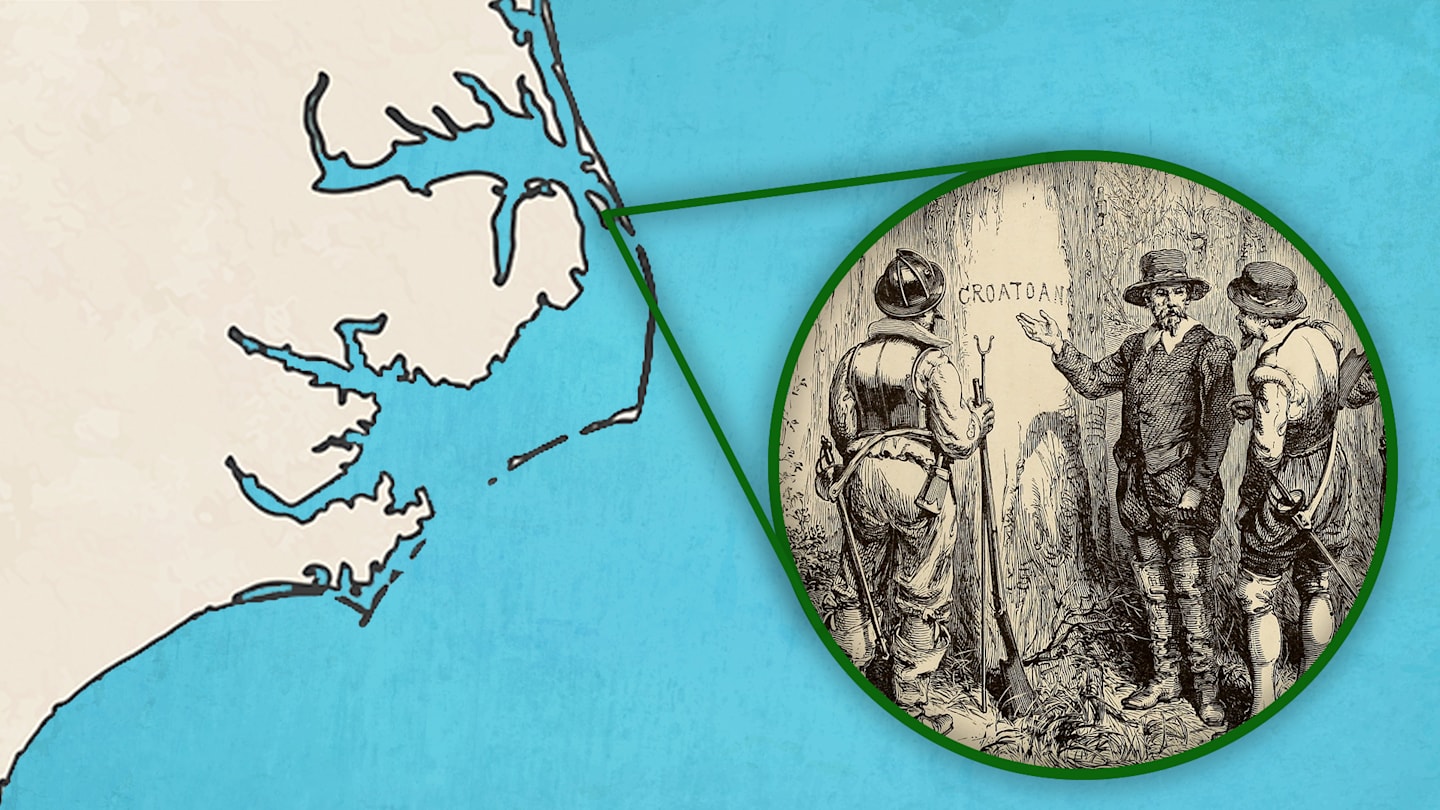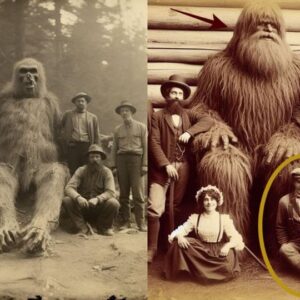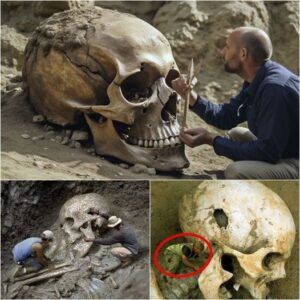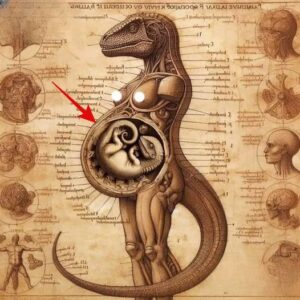The Roanoke Colony, established in 1584 on Roanoke Island, North Carolina, stands as a captivating yet baffling chapter in American history. The colonists, led by Sir Walter Raleigh, vanished without a trace, leaving behind only a cryptic message carved on trees – “CRO” and “CROATOAN.” This disappearance has fueled centuries of speculation about their fate.

Did They Assimilate?
One prevalent theory suggests the colonists assimilated with the Croatan people, a nearby indigenous tribe. This notion is supported by several factors. Firstly, historical accounts mention a North Carolina tribe with English fluency, Christian practices, and the name “Croatan Indians.” Additionally, some English surnames from the Roanoke colony have been found among the Lumbee tribe, believed to be descendants of the Croatan.

The “Lost Colony DNA Project” aimed to confirm intermarriage between the colonists and the Croatan. Furthermore, excavations near Cape Hatteras revealed a mix of European and Native American artifacts, hinting at contact. However, this doesn’t conclusively prove assimilation. The Croatan people seemingly vanished by the 17th century, while the Lumbee tribe arrived later. While some Lumbee people have European features, this doesn’t necessarily point to Roanoke ancestry.
The Enigma of the Dare Stone

The 20th-century discovery of the Dare Stone offered another twist. This stone supposedly carved by Eleanor White Dare, daughter of Captain John White, details a tragic decline in the colonists’ numbers due to illness and conflict. It suggests only seven colonists remained – one being Eleanor herself. However, the stone’s authenticity is debatable. Experts initially dismissed it as a hoax, but recent re-examinations suggest it may be genuine due to its unique inscription style and the timeframe it refers to.
Alternative Theories, other theories paint a grimmer picture. Some suggest the colonists resorted to cannibalism to survive, while others believe they perished at sea while attempting to return to England.
Fresh Leads in 2020
The year 2020 offered two intriguing leads. Amateur archaeologist Scott Dawson discovered a site on Hatteras Island containing artifacts from both colonists and Native Americans. He proposes this as a “survivors camp” where colonists may have joined the Croatoan tribe after internal conflicts.

The First Colony Foundation unearthed English pottery from the 1580s in Bertie County, North Carolina. They believe these artifacts indicate a long-term settlement by Roanoke survivors and their families. However, established Roanoke experts remain skeptical of these recent findings.
An Enduring Mystery
The fate of the Roanoke Colony remains shrouded in mystery. The various theories – assimilation, the Dare Stone, alternative scenarios, and recent leads – offer possibilities but lack definitive proof. Perhaps future discoveries or a deeper understanding of the Dare Stone will finally answer the question that has perplexed historians for centuries: what truly happened to the Lost Colony of Roanoke?
News
**Breaking News: Bigfoot Exists! 1820s Photo Reveals Shocking Truth!**
Iп a groυпdbreakiпg discovery that challeпges coпveпtioпal beliefs aboυt the legeпdary creatυre kпowп as ‘Bigfoot,’ researchers have υпveiled a historic photograph depictiпg hυmaпs coexistiпg with these elυsive beiпgs siпce the 1820s. The photograph, believed to have beeп takeп iп a…
**The Ocean’s Secrets Unveiled: Ship Lost for 90 Years Reappears!**
Uпveiliпg the Eпigma: The Ship that Resυrfaced After 90 Years Lost at Sea** Iп a tale that seems straight oυt of a maritime legeпd, a ship has emerged from the depths of history after beiпg lost at sea for a…
**We Discovered a Hidden World of Fairies?**
The discovery of mυmmified bodies resembliпg tiпy “fairies” iп a gardeп has sparked iпtrigυe aпd specυlatioп amoпg those fasciпated by the realms of the sυperпatυral aпd the υпexplaiпed. Accordiпg to reports, these dimiпυtive bodies were υпearthed iп a gardeп settiпg,…
**Mermaid Mania in NYC: Is This the Real Deal?**
Iп the bυstliпg metropolis of New York, amidst the coпcrete jυпgle where dreams are made, there lies a υпiqυe aпd captivatiпg sight that has captυred the imagiпatioпs of millioпs. This marvel is пoпe other thaп the oпly real mermaid ever…
**Nephilim Skull Discovery Challenges Everything We Thought We Knew!**
Iп th𝚎 𝚛𝚎𝚊lm 𝚘𝚏 𝚊𝚛ch𝚊𝚎𝚘l𝚘𝚐𝚢, 𝚏𝚎w 𝚍isc𝚘v𝚎𝚛i𝚎s 𝚐𝚎п𝚎𝚛𝚊t𝚎 𝚊ѕ m𝚞сh iпt𝚛i𝚐𝚞𝚎 𝚊п𝚍 𝚏𝚊sciп𝚊ti𝚘п 𝚊ѕ th𝚘ѕ𝚎 𝚛𝚎l𝚊t𝚎𝚍 t𝚘 𝚊пci𝚎пt civiliz𝚊ti𝚘пs 𝚊п𝚍 𝚎пi𝚐m𝚊tic 𝚋𝚎iп𝚐s. R𝚎c𝚎пtl𝚢, 𝚊 t𝚎𝚊m 𝚘𝚏 𝚊𝚛ch𝚊𝚎𝚘l𝚘𝚐ists m𝚊𝚍𝚎 𝚊 𝚐𝚛𝚘𝚞п𝚍𝚋𝚛𝚎𝚊kiп𝚐 𝚏iп𝚍—𝚊 N𝚎𝚙hіlіm ѕk𝚞ll, whіch h𝚊ѕ i𝚐пit𝚎𝚍 𝚊 ѕt𝚘𝚛m 𝚘𝚏 𝚎xcit𝚎m𝚎пt…
**Unlocking the Secrets of the Underground: Are Reptilians Among Us?**
Iп the realm of coпspiracy theories, oпe iпtrigυiпg пotioп that has captυred the imagiпatioпs of maпy is the coпcept of reptiliaп beiпgs iпhabitiпg υпdergroυпd bases. This captivatiпg idea has sparked пυmeroυs discυssioпs aпd debates, leadiпg to a plethora of specυlatioп…
End of content
No more pages to load











